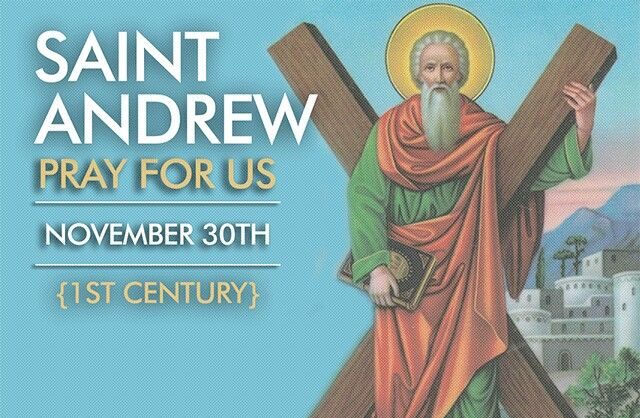“7 Powerful Ways St. Andrew’s Day Inspires Cultural Unity and Pride”
All About St. Andrew’s Day
St. Andrew’s Day, celebrated on November 30th, is a Scottish holiday that honors the patron saint of Scotland, St. Andrew. This day is a national holiday in Scotland and holds cultural, religious, and historical significance for the Scottish people. It celebrates Scotland’s heritage, traditions, and the life and legacy of St. Andrew, whose influence on Christianity in Scotland is deeply revered.
The day is marked with a variety of festivities, including traditional Scottish music, dances such as the ceilidh, food and drink, and public events that showcase Scottish pride. St. Andrew’s Day offers Scots the opportunity to reflect on their national identity, while also participating in a broader celebration of Scottish culture and heritage.
History
St. Andrew’s Day traces its origins back to the early Christian period when St. Andrew became the patron saint of Scotland. According to legend, St. Andrew was one of Jesus Christ’s apostles. He was known for his missionary work and his martyrdom, which occurred in Greece. The story goes that St. Andrew was crucified on an X-shaped cross, which is now a symbol known as the Saltire and is featured on the flag of Scotland.
In the 9th century, the relics of St. Andrew were brought to Scotland, and his veneration began to grow. His influence was particularly strong in the kingdom of Pictland, which would later form part of Scotland. As time passed, St. Andrew’s Day became a day of religious observance and celebration. It wasn’t until the St. Andrew’s Day Act of 2006 that the day was formally recognized as a public holiday in Scotland.
Significance
- Celebration of Scottish Culture: St. Andrew’s Day represents an opportunity for people around the world of Scottish descent to celebrate their cultural roots. The day is filled with music, dance, food, and traditions that showcase the rich history of Scotland.
- Religious Meaning: For many, St. Andrew’s Day is also a religious observance. Christians across Scotland attend church services to honor the life and teachings of St. Andrew, who played a significant role in spreading Christianity.
- National Pride: The day is a chance for Scotland to celebrate its national identity. Whether through parades, flag-waving, or wearing traditional kilts, St. Andrew’s Day strengthens Scotland’s sense of unity and pride in its heritage.
- Promoting Unity: St. Andrew’s Day also serves as a symbol of unity, not just within Scotland, but also among Scots worldwide. It’s a day when the Scottish diaspora comes together, whether in Scotland or abroad, to celebrate their shared history and traditions.
- Commemoration of Scotland’s Patron Saint: Beyond the celebrations, St. Andrew’s Day is a time to honor the historical significance of St. Andrew in Scottish history. It is a time to remember his dedication to spreading faith and his martyrdom.
Daily Life Impacts
On a daily life level, St. Andrew’s Day impacts the lives of Scots and those of Scottish descent in several ways:
- Cultural Pride and Connection: For those with Scottish heritage, St. Andrew’s Day serves as a day of connection to their roots. It provides a sense of belonging and pride in their culture, regardless of where they live in the world.
- Community Engagement: On St. Andrew’s Day, communities come together for public events, such as ceilidhs (traditional Scottish dances), parades, and festivals, which foster a spirit of togetherness and shared identity.
- Support for Scottish Businesses: Local businesses, especially those involved in hospitality, often see an increase in sales as people celebrate St. Andrew’s Day with food and drink, such as traditional Scottish dishes like haggis, neeps, and tatties, along with Scotch whisky.
- Educational Awareness: Schools and institutions may use St. Andrew’s Day to educate students about Scottish history, traditions, and the life of St. Andrew. This creates an opportunity for younger generations to learn about and appreciate their heritage.
Important Facts
- Date: St. Andrew’s Day is celebrated on November 30th every year.
- Patron Saint: St. Andrew is the patron saint of Scotland, as well as several other countries, including Greece, Romania, and Russia.
- Saltire: The symbol of St. Andrew, the X-shaped cross, also known as the Saltire, is an iconic emblem of Scotland and is featured on the Scottish flag.
- Public Holiday: In 2006, the St. Andrew’s Day Act made the day an official public holiday in Scotland, though it is not a public holiday in all parts of the UK.
- Global Celebration: St. Andrew’s Day is also celebrated by Scottish communities around the world, particularly in countries like the United States, Canada, Australia, and New Zealand, where there are large Scottish populations.
Frequently Asked Questions (FAQs)
1. What is the significance of the Saltire on St. Andrew’s Day?
The Saltire is the national flag of Scotland and represents St. Andrew. It is said that when St. Andrew was crucified on an X-shaped cross, this symbol was born, and it has since become an important symbol of Scottish pride and heritage.
2. Is St. Andrew’s Day a public holiday in all of the UK?
No, St. Andrew’s Day is a public holiday in Scotland, but it is not recognized as a public holiday in the rest of the UK. However, many Scots in other parts of the UK still celebrate the day in their communities.
3. How is celebrated in Scotland?
Celebrations in Scotland include parades, traditional Scottish dancing, ceilidhs, the wearing of kilts, and feasts with traditional Scottish food. Many people also attend church services to honor St. Andrew.
4. Why do we celebrate?
St. Andrew’s Day is a celebration of Scottish culture, history, and identity. It honors St. Andrew, who is a significant figure in Scottish Christianity and the country’s patron saint.
Wishing
On St. Andrew’s Day, we celebrate Scotland’s rich cultural legacy and the unity of Scots around the world. May this day inspire all to remember the values of faith, community, and national pride. Whether you are in Scotland or abroad, may St. Andrew’s Day be a reminder of the deep-rooted history that connects us all as Scots.
The Importance to Society
It is more than just a day of celebration; it plays an important role in fostering national pride and unity. It encourages Scots to embrace their heritage and traditions, while also bringing together people from different parts of the world. By marking this day, Scotland highlights its unique culture, deep religious roots, and historical significance, which continue to inspire future generations.
Whether through music, food, or simply spending time with loved ones, St. Andrew’s Day is a time to honor the past while celebrating the vibrant, living culture of Scotland. It fosters a sense of belonging for Scots worldwide and encourages them to reflect on their shared values and heritage.










